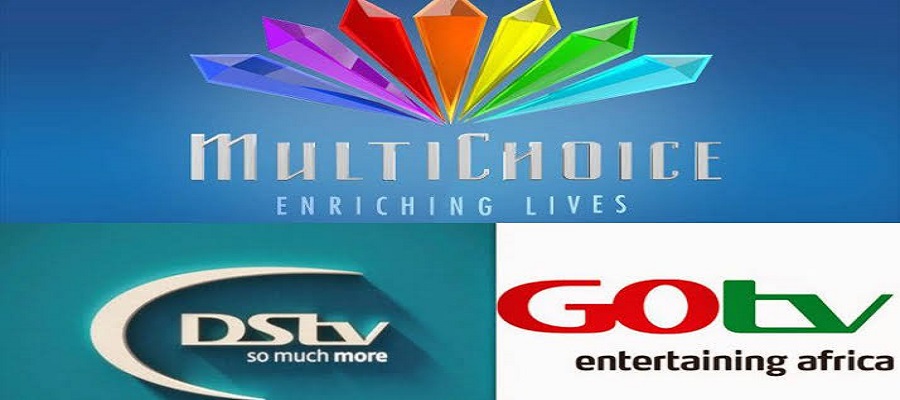Broadcasting
5 Ways to Write an Engaging Value Proposition for Your Website

When it comes to selling newspapers, persuasive and relevant “above-the-fold” content has always been a necessity. The top half of the newspaper—the only part that can be seen from newsstands, is what is commonly referred to as “above the fold.” For newspapers to sell out, this above-the-fold content needs to be compelling and enticing.

The same is true of websites. On a website, this is the part visitors and prospects see immediately, without having to scroll. Also known as the “headline”, this section should carry your business’s value proposition. How well you communicate the core value and qualities of your product/service here will make the visitor want to keep scrolling, learn more about you, and ultimately choose you over other competitors.
Your headline and sub-headline should answer these questions, as briefly as possible:
● What does your company do?
● What pain points does it address and what problems does it solve for your visitors and prospects?
● Why should prospects choose you over your competitors?
In other words, a good value proposition knows its target market and through the above, it immediately lets visitors know if they are in the right place or not.
Here are five ways to ensure you get your value proposition right:
1. Speak to your customer about your entire offering
A good value proposition invites visitors to focus on their needs as well as other aspects of their requirements that they may miss out on considering otherwise. Try to capture the whole essence of your offering instead of talking about one specific aspect. For instance, take a bed and breakfast (B&B) that also includes add-on services like experience packages and guide bookings. The headline and sub-headline together should succinctly inform the visitor that it’s a B&B that not only offers a relaxing stay but also a range of add-ons. A benefits-focused copy always goes a long way.
2. Emphasise your difference
Showcase your product/service’s remarkable qualities that will pique your visitor’s interest. If it’s a CRM software, how is your offering different from the scores of other CRM software in the market? Is it top-rated in the market? Is it recommended by industry experts? Is it priced the best? Is it tailor-made for a certain segment like large enterprises or SMEs?
3. Show them a problem-free and delightful future
Your copy should encourage your visitor to envision a future that will be ‘all the more better’ for them because of your product/service. Say you provide a digital note-taking application. It’s a good idea to portray the pain-points solved as well as the delights offered by the application. The headline and sub-headline could jointly communicate that while the visitor finds it easy to remember things, the note-maker additionally helps them become resourceful and accomplish more by keeping track of their thoughts and ideas in the form of organized lists. Also, while visualizing the relationship, it’s important to use a copy that’s simple and jargon-free to reinforce the benefits in a more impactful way.
4. Get clever (but not too clever)
Wordplay can be a hit or a miss in copywriting – sacrificing clarity for cleverness in your copy more often than not does not create an impression as powerful as the simple but clear copy that you discarded earlier. Whenever you’re using wordplay or less-common words in your copy, use a light hand. Remember, the goal is to show the customer exactly how your product or service will improve their life.
5. Use hero images and CTAs
If you’ve noticed, most headlines and subheadings on websites are placed in the hero image. What’s more, each sub-headline is directly followed by a call to action (CTA). However, both of these items—the hero image and CTA, should only be the second and third elements you consider for your website’s above-the-fold space. First, try to summarise your business value proposition in a copy that’s simple, clear, and brief.
Additionally, go through the websites of some of your favourite businesses, and see how they are using this valuable real estate. Come up with as many headlines and subheadings as possible. Mix and match them, and get input from other people to make the most of this space.
Broadcasting
IFC, AfDB Collaborate with EbonyLife Media to Explore Supporting the African Film Industry to Drive Job Creation

As part of their ongoing efforts to support the growth of Africa’s creative industries and drive job creation in the region, IFC and the African Development Bank have announced a collaboration with EbonyLife Media, Nigeria’s leading media company, to explore the conditions for the creation of a pan-African investment vehicle targeted at the region’s film sector.

The aim is to improve access to financing for productions that promote original African stories around the world. EbonyLife Media has built a reputation for bringing compelling African narratives to global audiences through innovative storytelling.
The company has produced some of the highest-grossing movies in the region and enjoys strategic collaborations with global media companies, including Sony Pictures Television, Westbrook Studios, Starz, Macro Film Studios and Idris Elba’s 22 Summers.
This effort is in line with IFC’s strategy to expand Africa’s creative industries, recognizing the sector’s potential to drive job creation – especially for youth – promote inclusive narratives, and stimulate economic growth across emerging markets.
Despite the growth of film production across the continent over the last few years, Africa’s film sector remains untapped. According to UNESCO, the sector currently supports approximately 5 million jobs and contributes $5 billion to the continent’s GDP.
However, the industry faces significant challenges that inhibit its growth potential, including persistent financing gaps, policy barriers and lack of a robust intellectual property regulatory framework and implementation, which results in up to 50 percent revenue loss to piracy by film producers in the region.

In this context, IFC, AfDB and Ebony Life are exploring ways in which they can crowd in more capital into African film productions and support the expansion of the film industry at scale in the continent, while working with governments to introduce protection of intellectual property and film incentives, essential to strengthen the economics of film production in the continent.
“Africa’s creative economy is a cultural asset and an engine for inclusive growth, youth employment, and global influence. Through this partnership, we aim to unlock new capital for the continent’s storytellers, helping them bring authentic African voices to international platforms while boosting job creation in one of the most dynamic sectors of the future,” said Dahlia Khalifa, Regional Director for Central Africa and Anglophone West Africa at IFC.
Ousmane Fall, The African Development Bank Group’s Director for Private Sector Operations, said: “This collaboration reflects the African Development Bank Group’s growing interest in creative industries as a growth sector supporting entrepreneurship and job creation for young people and women in Africa.
“By joining forces with EbonyLife, Nigeria’s premium media conglomerate, and IFC, a like-minded DFI institution, we are seeking to support the creation of a sustainable investment vehicle for film production in Africa”.
“This has been a long time coming. For nearly two years, I’ve been quietly laying the groundwork—defining and building an ecosystem designed to scale, to unlock opportunity, and to provide the vital capital African filmmakers need to create stories that resonate across borders and generations.
“Today, I am thrilled and deeply proud to welcome the IFC and AfDB on this journey. Together, we will identify ways in which we can catalyze a new era of African storytelling that can thrive on the global stage” said Mo Abudu, CEO, EbonyLife Media.
Broadcasting
Prioritising Security: The Bedrock of Stronger Workplace Collaboration in Nigeria

By Kehinde Ogundare, Country Head, Zoho Nigeria
In Nigeria’s dynamic and often demanding business landscape, robust workplace collaboration is no longer a luxury—it is a necessity for sustainable growth and resilience. As per a study, 86% of employees believe that a lack of collaboration can lead to workplace failures; its significance cannot be overstated. As enterprises in 2025 increasingly adopt digital tools to enhance teamwork, one critical foundation must support this transformation: unwavering security.

Today, the need to prioritise security goes far beyond protecting sensitive data. It is about fostering trust and laying a solid foundation upon which effective, innovative collaboration can thrive—especially in an era marked by ever-evolving cyber threats.
Security: The Hidden Pillar of Effective Collaboration
Collaboration flourishes in an environment grounded in confidence and safety. When employees trust that their tools are secure against the sophisticated cyber threats of 2025, they are more likely to share information freely and engage deeply. A secure environment nurtures the psychological safety required for open and meaningful contribution.
Conversely, environments that lack adequate security measures not only deter open collaboration but also expose businesses to data breaches, operational disruptions, and the erosion of client and stakeholder trust—risks no forward-thinking enterprise can afford.
Therefore, security must be treated as a core strategic priority rather than an afterthought. This involves implementing best practices such as strict data access controls based on the principle of least privilege and comprehensive data protection measures—encryption, vulnerability management, and safeguarding data at rest, in transit, and in use. Such a commitment becomes the foundation for enduring, high-performing collaboration.
Integrated Platforms: Enabling Secure, Seamless Collaboration
Striking the right balance between agile collaboration and stringent security requires a deliberate, policy-driven approach. Nigerian businesses should adopt integrated platforms where security is built into the very core of the solution. These platforms offer a unified environment for communication, project management, and data sharing—underpinned by a comprehensive data security policy that includes clear protocols for data handling, processing, and privacy.
Here, the value of an all-in-one, inherently secure software suite becomes evident. Solutions that are both affordable and designed with embedded security features empower businesses to protect critical data while facilitating efficient teamwork. Features like data classification, minimal storage of sensitive information, and built-in compliance tools ensure that security is always active—shielding organisations from complex modern threats.
Moreover, these platforms streamline communication and task management, reducing meetings considered ineffective. By providing coordination and information flow, they foster stronger collaboration and drive sustainable growth in Nigeria’s competitive market.
Building a Secure Future for Collaboration
The path to truly collaborative workplaces begins with an unshakable commitment to security. It is an investment that yields significant returns in the form of increased efficiency, stronger team cohesion, and increased stakeholder trust.
For business leaders, the mandate is clear: make security an integral, non-negotiable element of your collaboration strategy. Doing so not only protects your present operations from an increasingly hostile cyber landscape but also establishes a resilient foundation for future innovation and growth.
The future of work in Nigeria is undoubtedly collaborative. Its long-term, however, will be determined by how securely that collaboration is built and maintained.
Broadcasting
CCPT Dismisses Class Action Suit against MultiChoice over Tariff Hikes

Competition and Consumer Protection Tribunal (CCPT) in Abuja has dismissed a class action suit filed by one Uche Diala and 961 other DStv and GOtv subscribers against MultiChoice Nigeria and the Federal Competition and Consumer Protection Commission (FCCPC), citing lack of jurisdiction.

The suit challenged MultiChoice’s subscription price increases in November 2023 and May 2024, which the claimants described as arbitrary, exploitative, and unfair.
Diala and others sought to reverse the hikes and compel the company to adopt a more flexible billing model, such as a pay-as-you-view system used in other countries like South Africa.
They also accused MultiChoice of price discrimination against Nigerian consumers.
MultiChoice, through its counsel, raised a preliminary objection, arguing that pricing decisions do not fall within the tribunal’s remit and that the suit was improperly filed as a class action without first seeking the tribunal’s leave.
In its ruling on Thursday, the tribunal’s three-member panel led by Justice Thomas Okosun held that the core issues raised, which were pricing and tariff regulation, fall under the exclusive purview of the executive branch, particularly the President, as stipulated under the Price Control Act.
“The issue of price regulation is a matter that falls within the exclusive purview of the President of the Federal Republic of Nigeria,” Okosun stated.
While the tribunal acknowledged it holds both original and appellate jurisdiction under the FCCPC Act, it emphasized that such authority does not cover general price control unless abuse of market dominance is established—a point the claimants failed to prove.
On the procedural matter of filing a class action without prior approval, the tribunal noted that although it is ideal to obtain leave, failure to do so was not fatal in this instance since the claimants demonstrated a shared grievance and common interest.
Nonetheless, the tribunal upheld MultiChoice’s objection, ruling that it lacked jurisdiction to adjudicate the matter.
“The preliminary objection of the first defendant succeeds,” the panel held. “This suit is accordingly struck out for want of jurisdiction.”
This ruling follows a similar outcome on May 8, when a Federal High Court in Abuja upheld MultiChoice’s price increases after the company sued the FCCPC.
In that judgment, Justice James Omotoso declared that the FCCPC lacked the authority to fix or suspend subscription rates.

 Telecom3 days ago
Telecom3 days agoAVEVA Highlights Climate Impact Gains in 2024 Sustainability Report

 General News3 days ago
General News3 days agoAfCFTA Opens Opportunity for Logistics Sector

 Telecom3 days ago
Telecom3 days agoALTON Explains SIM-related Services Disruption Across Mobile Networks

 Telecom2 days ago
Telecom2 days agoNCC Approves MTN, 9Mobile Roaming Collaboration Deal

 E-Financial2 days ago
E-Financial2 days agoWorld Bank Approves Extra $65m for Nigeria’s SPESSE

 E-Financial2 days ago
E-Financial2 days agoEcobank Taps Google Cloud to Deepen Financial Inclusion

 Telecom3 days ago
Telecom3 days agoMTN Foundation, NDLEA, UNODC Unite in Abuja Against Substance Abuse

 Telecom23 hours ago
Telecom23 hours agoMTN Nigeria Debuts Game-Changing CPaaS Platform at NextNow Forum






















